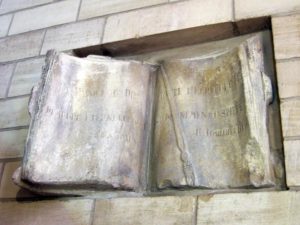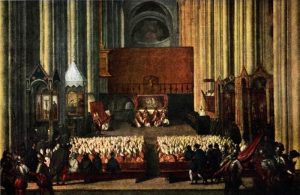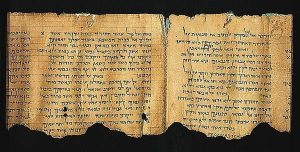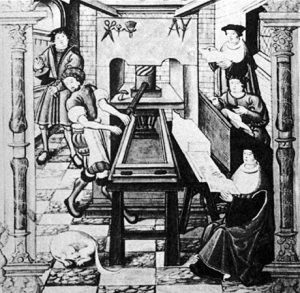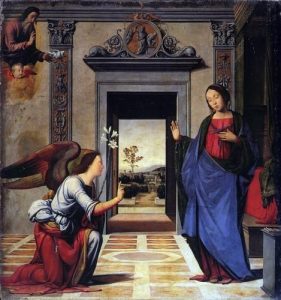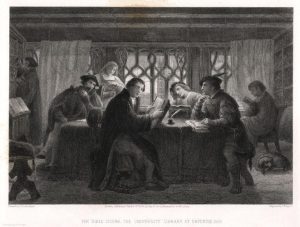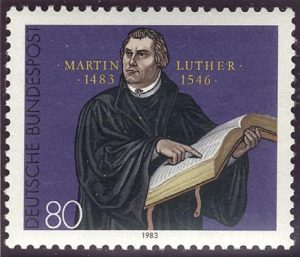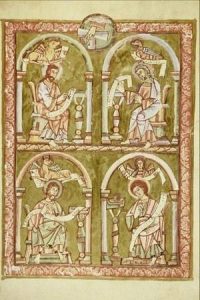The contents of the Old Testament
The term Old Testament has to be considered in conjunction with the New Testament. It refers to the “Covenant” between God and his chosen people. Christians call it the First or Old Covenant while the New Testament is referred to as the “New Covenant” between God and all mankind, through his son Jesus Christ.
The Old Testament is made up of several collections of books that are found in the Jewish Bible :
- The Law (Torah in Hebrew) comprises the first five books (Genesis, Exodus, Leviticus, Numbers and Deuteronomy). They tell us about God’s creation of the world and of mankind from a theological point of view, followed by the growth and development of Israel, God’s people and the relationship of God with men, seen mostly through the figures of the patriarchs Abraham, Isaac and Jacob. Then come the stories of Moses, the flight out of Egypt and the journey through the desert to the Promised Land. These five books give an account of the Covenant between God and his people, which lays down the rules for their social, political and religious life.
- The Prophets begins with long narratives about the history of the people of Israel, from when they settled in Canaan to the destruction of Jerusalem and the exile to Babylon. As for the prophetic writings, these begin with lengthy works attributed to the major prophets (Isaiah, Jeremiah, Ezekiel, Daniel) and continue with those of the twelve “minor” prophets. The prophets denounce the sins committed by the people of Israel as regards their Covenant with God and predict divine punishment, which will be the prelude to a new Covenant. However, while the prophets denounce Israel’s sins they also remind them of God’s plan of salvation.
- The Writings are a collection of various different kinds of books : songs (the Psalms, the Song of Solomon), books of meditation on the meaning of life, narratives about the history of Israel and stories (Esther and Ruth).
The Septuagint is a Greek translation dating back to the third century B.C. and other texts which are called “the Deuterocanonical books” by Roman Catholics (or “the Apocrypha” by Protestants) : Esther in Greek, Judith, Tobit, 1,2 and 3 Maccabees, the Wisdom of Solomon, Sirach, Baruch, the Letter of Jeremiah, Greek additions to the Book of Daniel, 3 and 4 Esdras, the Prayer of Manasseh, Psalm 151.
The Septuagint differs from the Jewish Bible in the number of books and their original language but also the way in which the books have been grouped into 4 parts : the Pentateuch, the historical books, the books of wisdom and poetry, the books of the prophets, which are placed last. In all probability the order of these books which we have today was established by the first Christians, who used the Septuagint Scriptures. They arranged these books so as to make up a history of Salvation, culminating in the announcement of the coming of the Messiah in the writings of the prophets. The list of the books in the Septuagint varies at different periods of time and in different communities.
The Christian canons of the Old Testament
A canon defines the list and order of Biblical books which a community uses as a reference for their faith.
In actual fact, Roman Catholics traditionally referred to the list of the Septuagint, while Protestants referred to that of the Jewish Bible, although both traditions followed the order of the Septuagint.
In the Eastern Churches, the Apocrypha has always been part of the Bible, although sometimes not all the texts were included. Catholics recognised as canonical (that is to say of equal value to the other Biblical books) at the Council of Trent in the 16th century. However, the Protestant Reformers considered these texts to be less important than the other contents the Jewish Bible and from the 16th to the 19th century, they placed them between the Old and the New Testament in their Bibles. In the 19th century they omitted this collection of books completely, mainly for economic reasons, so that the Bibles would have fewer pages and thus be less expensive. At the end of the 20th century they began to reintroduce these books again, particularly in ecumenical editions.
The languages of the Old Testament
The oldest Biblical texts were written in Hebrew, although some were in Aramaic, which was the official language of the Persian Empire. Some later texts were in Greek, for example the Apocrypha, as it was the main language used in the Empire of Alexander the Great.
The origin of the Old Testament texts
The Old Testament texts were written at different periods in ancient history and they have to be placed in the context of Middle Eastern history before theological ideas can begin to be developed. Specifically, some periods have produced very diverse oral or written traditions, which over time have been arranged into books : the royal period (10th to 6th century B.C.), the exile in Babylon (6th century B.C.), the Persian period (6th to 4th century B.C.).
During the royal period, the prophet’s role was to be God’s spokesperson. He would denounce the king, whether Jewish or foreign, when he had absolute power and allowed social injustice and religious disloyalty to hold sway in his kingdom. Some theologians follow the traditional view that the first five books of the Bible were written at the time of Moses, however, most historians consider it was probably at the time of the Exile. This period saw unprecedented literary expansion. During this period of deep crisis the Jews in exile reread their own history, and wrote it down, allowing them to reconstruct their identity.

